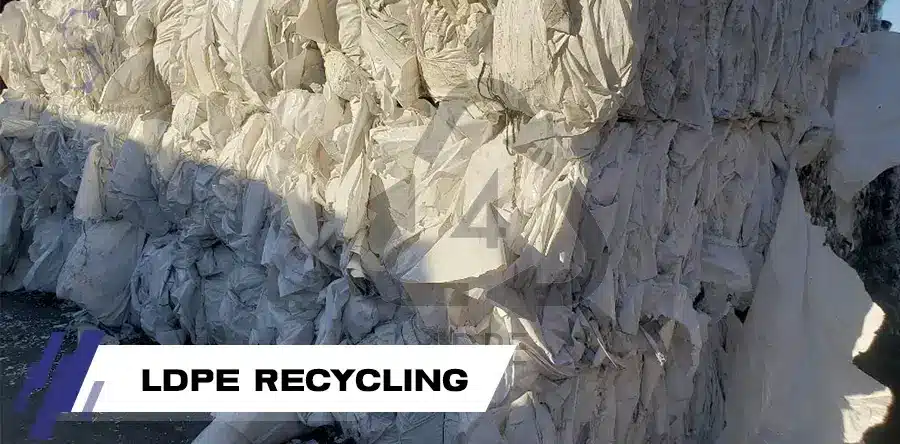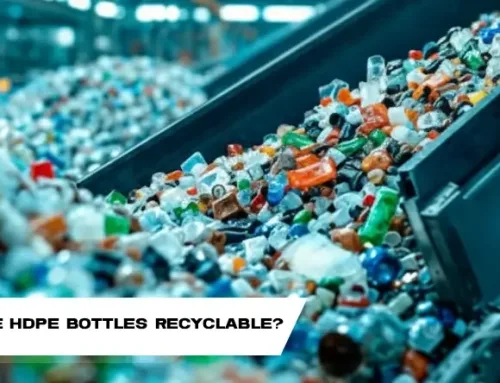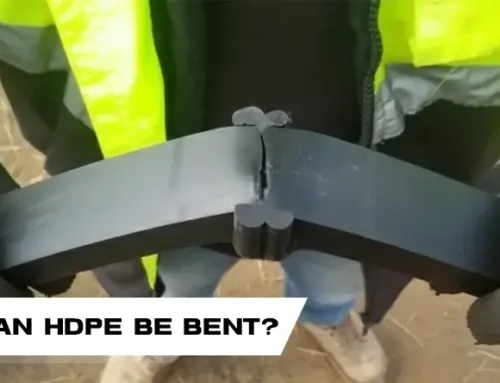Low Density Polyethylene or LDPE is a flexible plastic that is soft and is used in our daily lives. It is recognized through the recycling sign ♻️ that is commonly written as Plastic #4. The question to many people are, is LDPE recyclable or are LDPE plastic bags recyclable? The answer is a yes with some restrictions.
Ethylene is processed into a high-pressure polymer thin material to produce lightweight, durable and waterproof material known as LDPE. It is normally applied in grocery bags, squeezable bottles, cling films, packaging wraps and tubing. The label of recyclable #4 LDPE or recyclable LDPE 4 contributes to assisting the consumer to identify the items that can be classified as such.
Yet, LDPE is recyclable technically by LDPE plastic recycling machine, but it is not always accepted by the curbside collection systems. Most local recycling initiatives exclude soft films and bags since they entangle the equipments or they need separate sorting. Rather, LDPE products are usually recycled by specific drop bins and drop off programs particularly at retail shops or recycling facilities that take flexible plastics.
Why Is LDPE Recycling Important?
To know why is LDPE recyclable, it is important to begin by looking at the thermoplastic characteristics of the material. LDPE is a thermoplastic that can be melted and its structure re-molded and re-processed several times without compromising its fundamental chemical structure. This is suitable in a circular economy where the products are reused rather than discarded. Here are other reasons to reuse recyclable 4 LDPE:
Environmental Benefits: Reducing Plastic Pollution
Low Density Polyethylene recycling helps to cut down plastic pollution and conserve energy and also helps to reduce virgin polymer production necessitating fossil fuels. This will reduce the effect of LDPE on soil and water pollution by simply eliminating it out of the landfills.
Economic Incentives and Job Creation
To know are LDPE recyclable, we should mention that recycling can be used to generate jobs in the waste management system, and recovered LDPE pellets are cost-efficient raw materials in the production of new products. It is an easy but effective method of resource conservation and enhancement of sustainability.
Advancing the Circular Economy
LDPE recycling does not involve a take-make-dispose approach but rather the linkage of the materials in one production cycle to another. The LDPE recycled could be used again in the economy in the form of film, tubing, or molded plastic products to prolonging its usefulness and decreasing its environmental impact.
This is to say that LDPE recycling is not only good to the planet, but it is also necessary to create a more efficient and more responsible material economy.
The LDPE Recycling Process
The Low Density Polyethylene recycling process converts the waste materials of LDPE into manufacturing materials in the form of usable pellets or granules. Every step will take care of the minimization of contamination and the preservation of useful properties in the material.

Recycling machines have inbuilt filter systems, which filter impurities before extrusion enhancing the quality of pellets. The flexible structure of LDPE means that it can be re-melted.
Challenges:
For low density Polyethylene recycling, thin films and bags cannot be handled easily as they get stuck to each other and block machine. Pollution by organic remains or compound mixtures may also reduce the purification of the recycled item. Due to these reasons, there are many facilities that use special equipment or restrict LDPE intake to cleaner and pre-sorted sources.
LDPE Recycling Options: Where Can LDPE Be Recycled?
You may face the question of where can LDPE be recycled? The solution depends on the location and the infrastructure:
- Curbside collection:
LDPE films or bags are not collected by most household recycling bins. Although LDPE can be recycled, which makes it difficult to sort in recycling plants that handle rigid plastics.
- Drop-off points:
Big retailers and grocery stores usually offer plastic film bins. These centres receive clean LDPE bags, bread wrappers, and shrink wraps which get processed in special centres.
- Commercial recycling:
The industries producing large amounts of LDPE waste, such as packaging producers, agricultural enterprises and retailers, can collaborate directly with the providers of recycling services. Large quantities of LDPE film are gathered and ground into a form of waste that is resold as pellets.
- Global perspective:
Plastic #4 collection networks are also expanding fast in North America and Europe. Various initiatives are also trying to complete the circle of waste on flexible packaging. Assuming that the use of plastic is high in Asia, regional plans are being developed to incorporate LDPE film recovery using formal and informal methods.
Recycling LDPE is most effectively done through local program or retailer programs in which clean dry material should reach the relevant collection areas.
LDPE Recycling Costs and Market Overview
There are various factors that influence low density polyethylene recycling cost and they include in this case, collection, cleaning, transportation, and processing.
Key LDPE recycling costs are:
- Contamination: The dirty LDPE needs to be cleansed more dynamically and, accordingly, the total cost goes up.
- Transportation: Lightweight LDPE occupies space that increasing load transportation inefficiency.
- Sorting: Manual sorting can be very expensive particularly when mixed plastics are to be sorted.
Nevertheless, at scales where the systems become effective, the cost of LDPE recycling can be less than that of producing virgin polymer. Raised and lowered oil prices have brought about the competitive market of recycled LDPE or repro LDPE.
Market Insigh
Recycled LDPE pellets are increasingly used as recycled products in the global market, and packaging, construction, and consumer goods industries have been behind this growth. These industries are keen on recycled material in achieving the sustainability goals and corporate requirements of a circular production. According to market reports, there is a growing demand of quality high-cleaned LDPE which in most cases, finds its application in film application, piping, and injection-molded products.
In the economically developed areas, price subsidies and green procurement policies are other motivations that make the recycling of LDPE more profitable.
What Products Are Made from Recycled LDPE?
LDPE recycled does not mean the product is destroyed as garbage, it returns in a new form in numerous ways that are already known to us. Common products include:
- Garbage bins and liners
- Preparation of construction films and tarps
- Composite lumber and deck materials
- Reusable shopping bags
- Protective wraps and farm mulch films.
These products demonstrate that low density Polyethylene recycling is capable of producing valuable materials that are durable enough and can be used in practice. Recycled LDPE can be used with cost savings of production and also conserve energy and carbon emission that are quantifiable environmentally and economically.
Conclusion
Plastic number 4 is LDPE, which is recyclable, but it is not all recyclable because of the local infrastructure and how it is disposed. Although curbside programs might not include flexible films, special collection drop-offs and special facilities can guarantee a second life of LDPE.
Through awareness and involvement, consumers and industries can make the networks of recycling LDPE more resilient, lessen landfill waste and enable a more sustainable plastics economy. Recycling LDPE is not a choice, it is a needed action to a cleaner and more circular future.







Leave A Comment